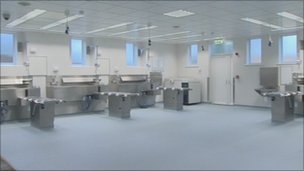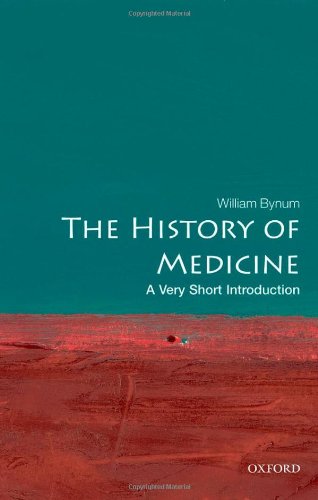
forensic pathologists & the autopsy
Forensic pathologists are medically qualified doctors who perform autopsies (postmortem examinations) on those who have died suddenly, unexpectedly, or as a result of trauma or poisoning.
Autopsy findings are combined with the results of other investigations, including the microscopic examination of organs and tissues removed at autopsy, toxicological analyses (of blood and urine, for example), and correlated with the available clinical or medical history of the deceased, as well as the circumstances of their death, in order to answer questions relating to their death.
The issues raised by a death may include:
- identification of the deceased,
- the medical cause of death,
- the interpretation of injuries, and
- the manner of death (in some jurisdictions), i.e. accident, suicide or homicide

Source: Wikimedia
... the autopsy is not an automatically self-revealing procedure. The answer that is sought does not spring out of the body when it is opened, like a jack-in-the-box. The pathologist who performs the autopsy must have experience and must develop an understanding of what he has to do. He must do the work himself to become expert in recognizing what he sees and in looking for what is important, a responsibility which may carry him beyond the conventional procedures.
... it is very important to recognize the fact that the performance of the autopsy, especially one with forensic implications, is virtuoso work. The more practice the pathologist gets - and he can get this only by hard work in the autopsy room - the more expert he will become in the solution of many puzzling unlabeled and mislabeled cases.
Helpern M. Comments on the value of the autopsy. Bull. N.Y. Acad. Med. 1968; 44:854-861
the autopsy report
Pathologists in England and Wales making post mortem examinations on behalf of the coroner report their findings to the coroner in a wide variety of formats; there is no set 'protocol', although Schedule 2 of the Coroners Rules 1984 does contain a form indicating the particulars to be present when the pathologist reports his/ her findings to the coroner.

The quality of reports made following coroners post mortem examinations has been criticised by the National Confidential Enquiry into Patient Outcome and Death (NCEPOD) - in their 2006 report 'The coroner's autopsy: do we deserve better?' - where one in four reports was considered poor or unacceptable.
Examples of reports are not easy to find on the internet, in view of the fact that reports of examinations made for the coroner are not to be supplied to any person other than the coroner, unless authorised by the coroner (Coroners Rules 1984 rule 10(2)). The report made by Dr Nicholas Hunt following his examination of the body of David Kelly has, however, been made public, and can be read at the Guardian newspaper's website. Whilst this report reflects the type of report made following forensic post mortem examinations in England and Wales, it is more detailed than those reports produced following 'routine' coroner's post mortem examinations.
Atlas of adult autopsy pathology (2015)
Buy this well-illustrated beginners text here, or from the CRC Press website, and preview the book at Google Books ...
The Hospital autopsy
The forensic autopsy
autopsy observation at medical school - the debate
The Student BMJ published an article on medical student experiences of the autopsy.
the autopsy in 18th century Paris - the birth of clinico-pathological correlation?
Between the French revolutions of 1789 and 1848, a new form of hospital-based medicine flourished in Paris, where physical diagnosis, clinico-pathological corelation, and numerical analysis formed the basis of treatment.
Giovanni Battista Morgagni's (1682-1771) 'De sedibus et causis morborum' (On the seats and causes of diseases, translated by Alexander Benjamin in three volumes available online) - which focused on case-study and autopsy observations - underpinned the French pathological approach to medicine; they made the pathological study of the enormous hospitalised population routine, and did away with centuries of medical scholarship based on the ancient Greek texts. The pioneers of this holistic bedside to morgue approach to medicine were Jean- Nicholas Corvisart (1755-1821), Rene- Theophile- Hyacinthe Laennec (1781-1826), and Xavier Bichat (1771-1802).
Read Bichat's 'Physiological researches upon life and death' (translated by Tobias Watkins 1809) online here ...
If physical diagnoses helped the doctor find the lesion, the autopsy enabled him to interpret his earlier diagnoses and modify or reinforce them. Clinico-pathological correlation was thus a two-way street, with the repeated bedside observations giving the opportunity of following the patient's illness during his or her life, and these records being discussed in the light of the final observations on the corpse. The clinician was his own pathologist, caring for his patients in death as in life.
Bynum W. The history of medicine. A very short introduction. 2008 Oxford University Press
autopsy resources

Source: Wikimedia
- interactive autopsy (australian museum online)
- NCEPOD Report on coronial autopsies in England and Wales - 'The Coroner's autopsy: do we deserve better?'
- autopsy rate and physician attitude (eMedicine)
- the autopsy, medicine, and mortality statistics (US CDC)
- Silent Witness - interviews and behind-the-scenes interviews about the focus on autopsies
examining the dead (the Wellcome Collection)
Anatomage virtual dissection table
animation and anatomy
- Blender - animation software
- Make Human - software for creating a human figure for animation
autopsy: graphic novel-style
Forensic histopathology: fundamentals and perspectives


autopsy defined
autopsy (ô'tŏp'sē, ô'təp-) n. pl. au·top·sies
Examination of a cadaver to determine or confirm the cause of death. Also called necropsy,postmortem, postmortem examination.
tr.v.
au·top·sied, au·top·sying,au·top·sies
To subject to an autopsy.
[Greek autopsiā, a seeing for oneself : auto-, auto- +opsis, sight; see okw- in Indo-European roots.]
au·top'sic, au·top'si·caladj., au'top'sist n.
The American Heritage® Dictionary of the English Language, Fourth Edition
Copyright © 2009 by Houghton Mifflin Company.
Published by Houghton Mifflin Company. All rights reserved.
Cite This Source
post mortem defined
pōst-môr'təm
adj.
Occurring or done after death.
Of or relating to a medical examination of a dead body.
n.
See autopsy.
Informal An analysis or review of a finished event.
[Latin post mortem : post,afterward; see post- +mortem, accusative of mors,death; see mer- in Indo-European roots.]
post mor'tem adv.
Copyright © 2009 by Houghton Mifflin Company.
Published by Houghton Mifflin Company. All rights reserved.
Cite This Source
Over 20 years, a student-centred, case-based, selfdirected learning system evolved, underpinned by autopsy, peer evaluation and medical history. Entirely voluntary, it was popular and successful, testifying to the ongoing relevance of Osler’s philosophy and autopsy-based learning in medical education today.
O'Grady G. The Breakfast Club: case study of a teaching-autopsy curriculum. Medical Teacher 2004; 26:377-378
modern autopsy facilities

- What does a modern (UK) mortuary facility look like? See this BBC report on the opening of a new facility near Bristol, England (Flax Bourton)
- View the New York City Medical Examiner's autopsy facilities in this New York Times interactive tour feature .
An autopsy is not a mathematical audit procedure where an accountant totals up all the organs, multiplies them by the square root of six, then feeds the result into a computer, and automatically comes out with right answers. The findings at autopsy must be evaluated carefully and studied, and then interpreted in the light of all the other known facts. Sure, the beginning point of these cases is an autopsy; but it needs to be an autopsy performed by a man who knows what to look for, and then how to interpret what he finds.
Dr Milton Helpern in 'Where death delights', Marshall Houts 1967 p.108




